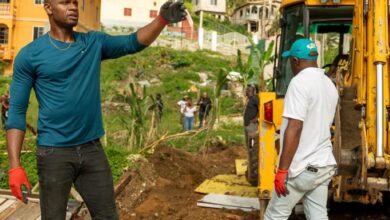Chile’s Marble Cathedral: your next adventure
In Chilean Patagonia, hides a treasure of giant rocky veins sculpted in marble, surrounded by lakes and volcanoes

Glaciers, rivers, streams, volcanoes, lakes, caverns, and waterfalls accompany the way to Puerto Tranquilo, in the Aysén region of Chile. Lake General Carrera, also known as Lake Buenos Aires, is the second largest in South America, with an area of more than 1850 km² shared almost equally by Chile and Argentina. Its varied geography presents conditions that make extreme sports, adventure, and hiking possible along with the charms of nature. Its multicoloured waters, the villages, and ports surrounding the lake make it one of the most visited attractions for sport fishing of trout and salmonidae. However, nothing compares to its strange rock formations, especially some small islets in the middle of the lake made up of marbles sculpted in white and ivory tones: the Marble Cathedral.
Only seven kilometers by boat separate Puerto Tranquilo from the Cathedral. This crossing takes about two hours, during which you will appreciate the unique Andean landscape, sailing on the lake and seeing the colorful marbles. These formations are surprising for the variety of colors, textures, and shapes as well as for the natural illumination of the immediate reflection of the crystalline water of the lake. The turquoise water contrasts against the grey, yellow, green, brown, and black marbles. The untimely waves permanently impact the walls of the site, the water flows from deep cracks in the rock, and the irregular stalactites demand permanent attention in a place that steals the looks.
How did these rocky chains form?
According to the Chilean Geological Society, the caves are carved in rocks belonging to the metamorphic base of the region, and it would be Paleozoic superior rocks, about 300 million years old. However, the specific formation of the caverns corresponds to a more recent phenomenon, post-glacial, less than 15 thousand years old, and generated by the differential dissolution of the marbles by the water of Lake General Carrera.
The caverns were, in principle, Argentine territory. Its existence was first documented by the Italian-Argentinian geographer and explorer Clemente Onelli during his expeditions of 1896 and 1897. Onelli described the place in his work Trepando los Andes, where he recounts the experiences in the campaigns led by expert Francisco Pascasio Moreno. He accompanied the publication of two photographs of the main islets in Lake Chelenko, a name that the natives had for it.
From different angles of the trail that surrounds the lake's waters, you can appreciate the summits of San Valentín and San Lorenzo mountains, covered with ice caps. In 1994, the caves were declared a Nature Sanctuary, one of the protection categories of Chilean legislation on National Monuments, which has elevated its importance as a tourist attraction since then.
Latin American Post | Juan Felipe Guerrero
Copy edited by Laura Rocha Rueda





